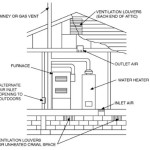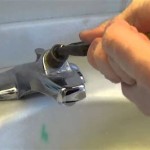How to Install a Bathroom Vent Through a Metal Roof
Installing a bathroom vent through a metal roof requires careful planning and execution to ensure proper ventilation and prevent leaks. The process involves cutting the metal roof, installing the vent flashing, and sealing the opening to prevent water infiltration. This article will guide you through the essential steps to successfully install a bathroom vent through a metal roof.
1. Planning and Preparation
Before you begin, it's crucial to plan the installation process carefully. This involves determining the best location for the vent, considering factors such as roof pitch, roof structure, and proximity to existing vents.
Here are some key steps for planning and preparation:
- Determine the vent location: Choose a location that allows for adequate ventilation and is not too close to other roof penetrations. Ideally, position the vent near the bathroom to minimize the length of the vent duct.
- Measure and mark the location: Use a tape measure to determine the exact location of the vent on the roof. Mark the outline of the vent opening using a pencil or marker.
- Select the appropriate vent: Choose a vent that is compatible with your roof material and meets the required ventilation capacity for your bathroom.
- Gather necessary tools and materials: Prepare all the required tools and materials, including a metal cutting tool (e.g., tin snips, circular saw), a roofing hammer, vent flashing, roofing sealant, screws, and safety gear (e.g., work gloves, safety glasses).
2. Cutting the Roof Opening
Once you've planned the installation, it's time to cut the opening in the metal roof. Use a metal-cutting tool to cut a hole slightly larger than the base of the vent flashing.
Here's how to cut the roof opening:
- Start by marking the outline: Use a pencil or marker to mark the outline of the vent opening on the roof. Ensure that the opening is slightly larger than the base of the vent flashing to allow for a snug fit.
- Use a metal-cutting tool: Cut the metal roof carefully along the marked outline. Use tin snips for smaller openings or a circular saw with a metal-cutting blade for larger openings. Take your time and cut precisely to prevent uneven or ragged edges.
- Remove the cut metal: Once you've cut the opening, carefully remove the cut metal from the roof. Dispose of it properly and avoid dropping the pieces on the roof, as they could damage the existing roofing.
3. Installing the Vent Flashing
The vent flashing is crucial for preventing water infiltration and ensuring proper ventilation. It acts as a barrier between the vent and the roof, directing water away from the opening.
Here's how to install the vent flashing:
- Position the vent flashing: Align the vent flashing over the cut opening in the roof, ensuring that the base of the flashing fits snugly against the roof surface. Make sure the flashing is level and the edges are flush with the roof.
- Secure the flashing: Use screws or nails to secure the vent flashing to the roof. Drive the fasteners through the flashing and into the roof decking. Choose fasteners that are compatible with your roof material and ensure they are long enough to penetrate the decking securely.
- Apply sealant: Apply a bead of roofing sealant around the edges of the flashing where it meets the roof. This will prevent water from seeping under the flashing and ensure a watertight seal.
4. Installing the Vent
Once the flashing is securely installed, the next step is to install the vent itself. This involves attaching the vent to the flashing and securing it to the roof.
Here's how to install the vent:
- Position the vent: Place the vent on top of the flashing, ensuring that the base of the vent aligns with the flashing. The vent should be centered over the opening and properly positioned to allow for proper ventilation.
- Secure the vent: Use screws or nails provided with the vent to attach it to the flashing. Drive the fasteners through the vent and into the flashing, ensuring that they are long enough to penetrate the flashing securely.
- Check for leaks: After securing the vent, check for any leaks around the flashing and the vent. Apply additional sealant if necessary.
Remember to exercise caution when working on a roof. Always use safety gear, such as work gloves, safety glasses, and a safety harness if necessary. Seek professional help if you are unsure about any step or if the installation is beyond your skill level.

Bath Vent Install In Metal Roof Slow House Update 27

How To Install Vents In Metal Roofs

Installing A Bathroom Fan Fine Homebuilding

Bath Vent Install In Metal Roof Slow House Update 27

How To Install A Bathroom Roof Vent Family Handyman

How To Replace And Install A Bathroom Exhaust Fan From Start Finish For Beginners Easy Diy

How To Vent A Bath Fan Through The Roof This Old House

How To Install A Bathroom Roof Vent Family Handyman
Bathroom Exhaust Fans Building America Solution Center

Venting A Bath Fan In Cold Climate Fine Homebuilding
Related Posts







